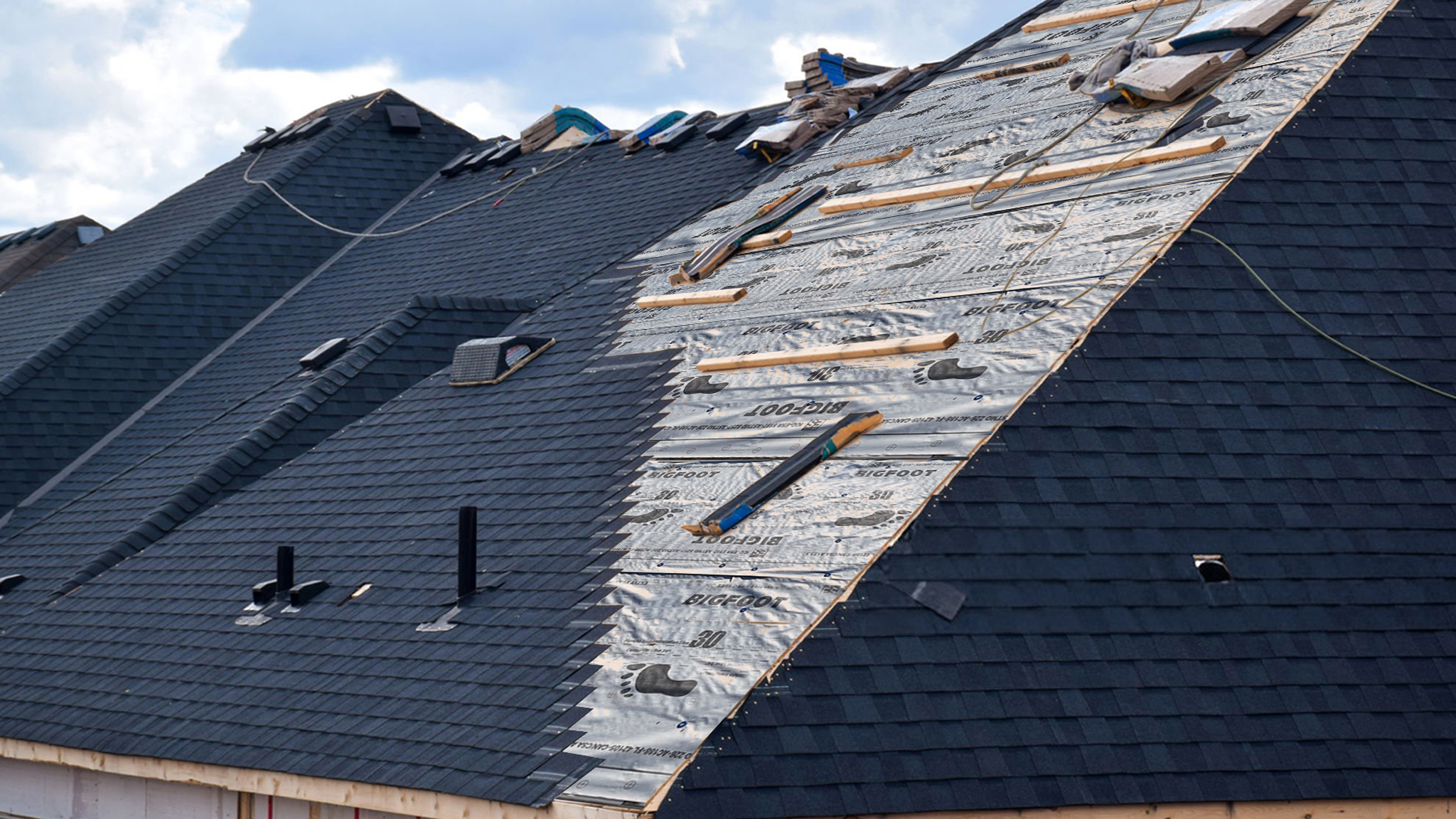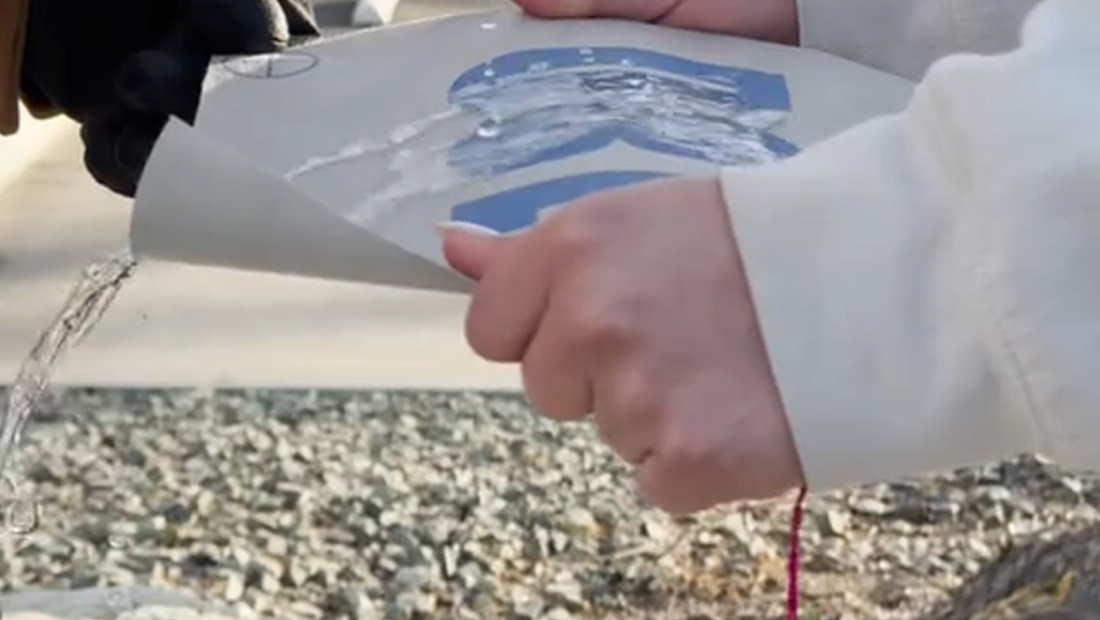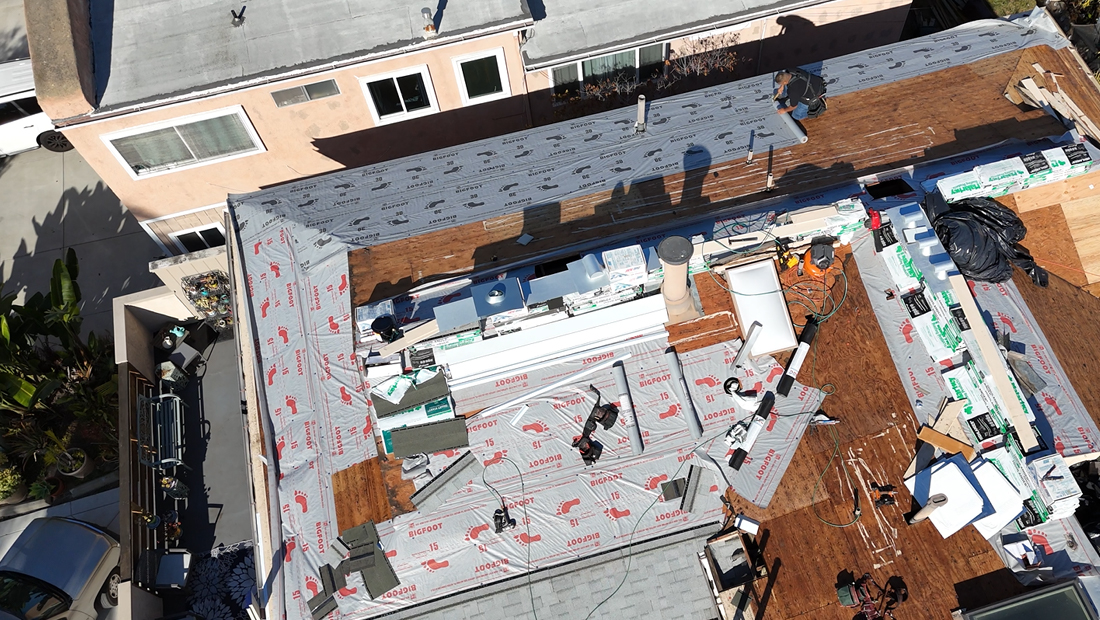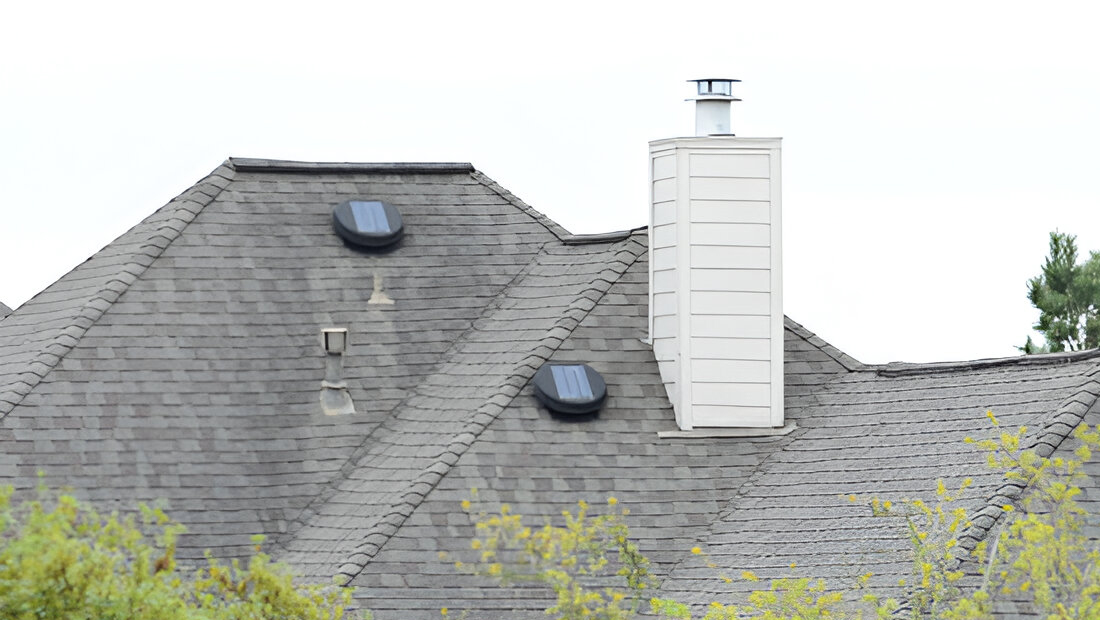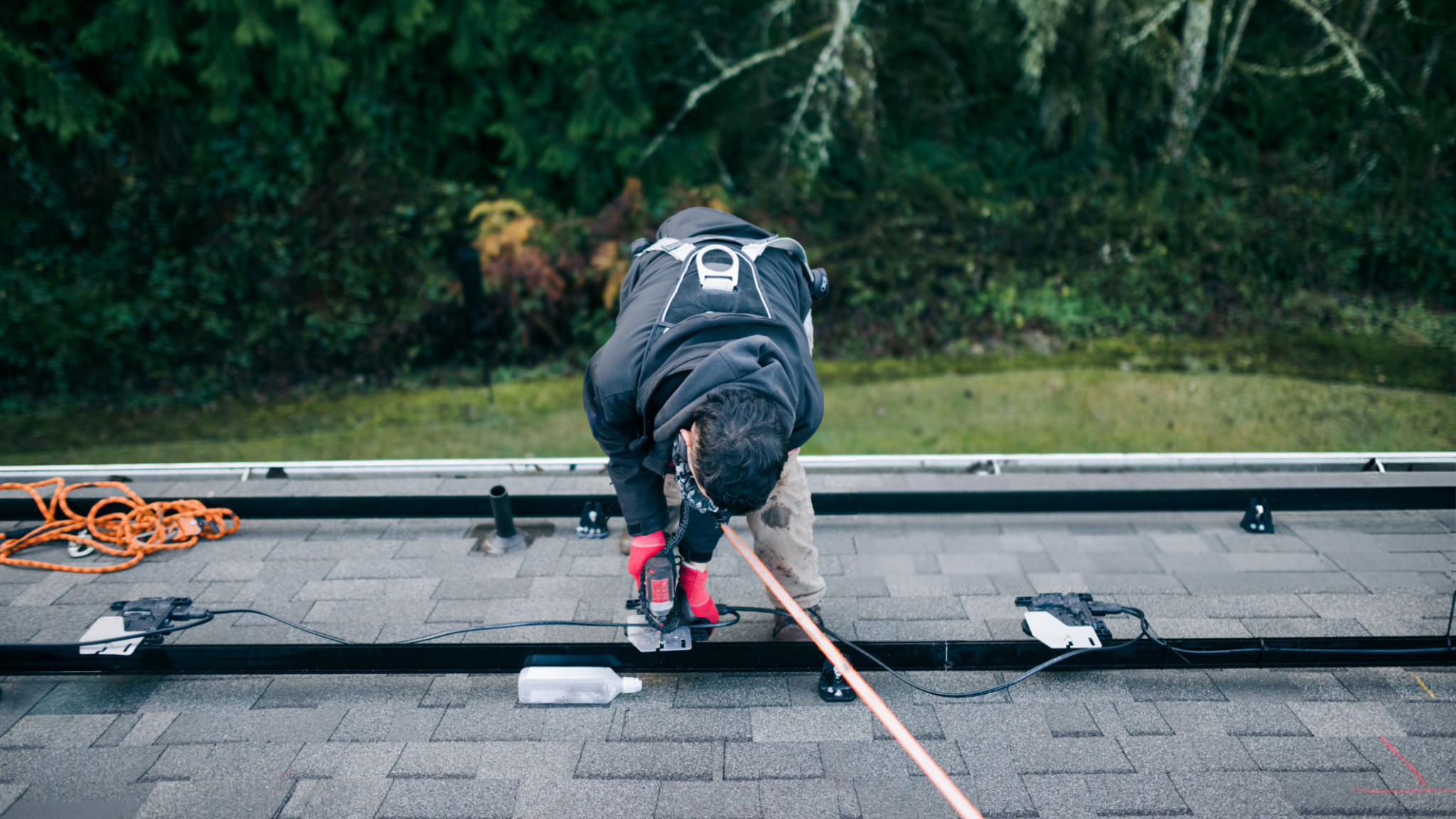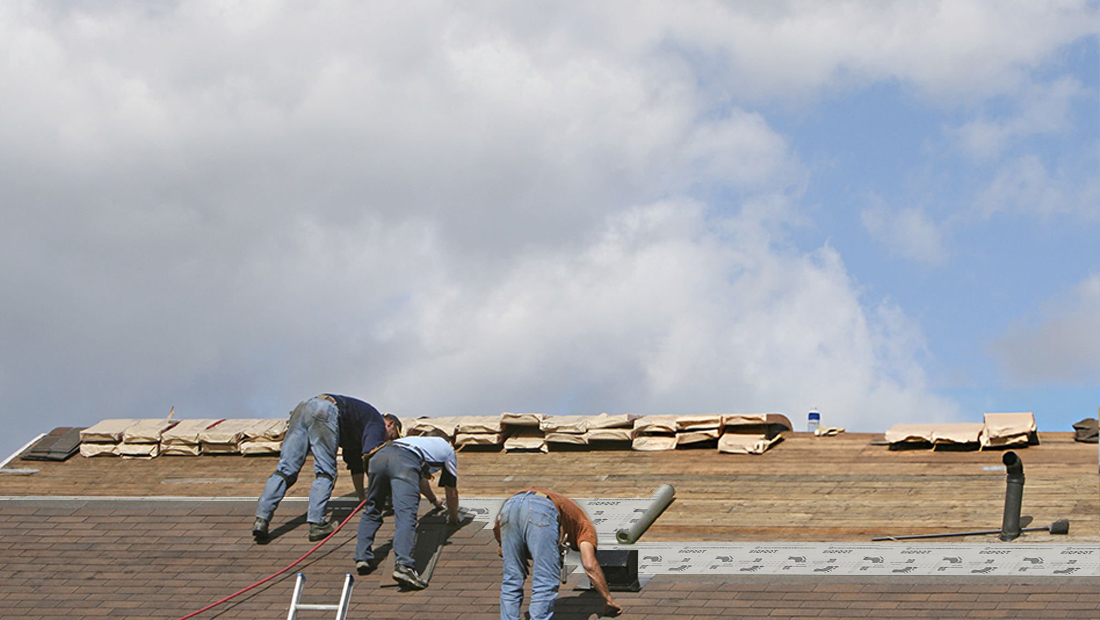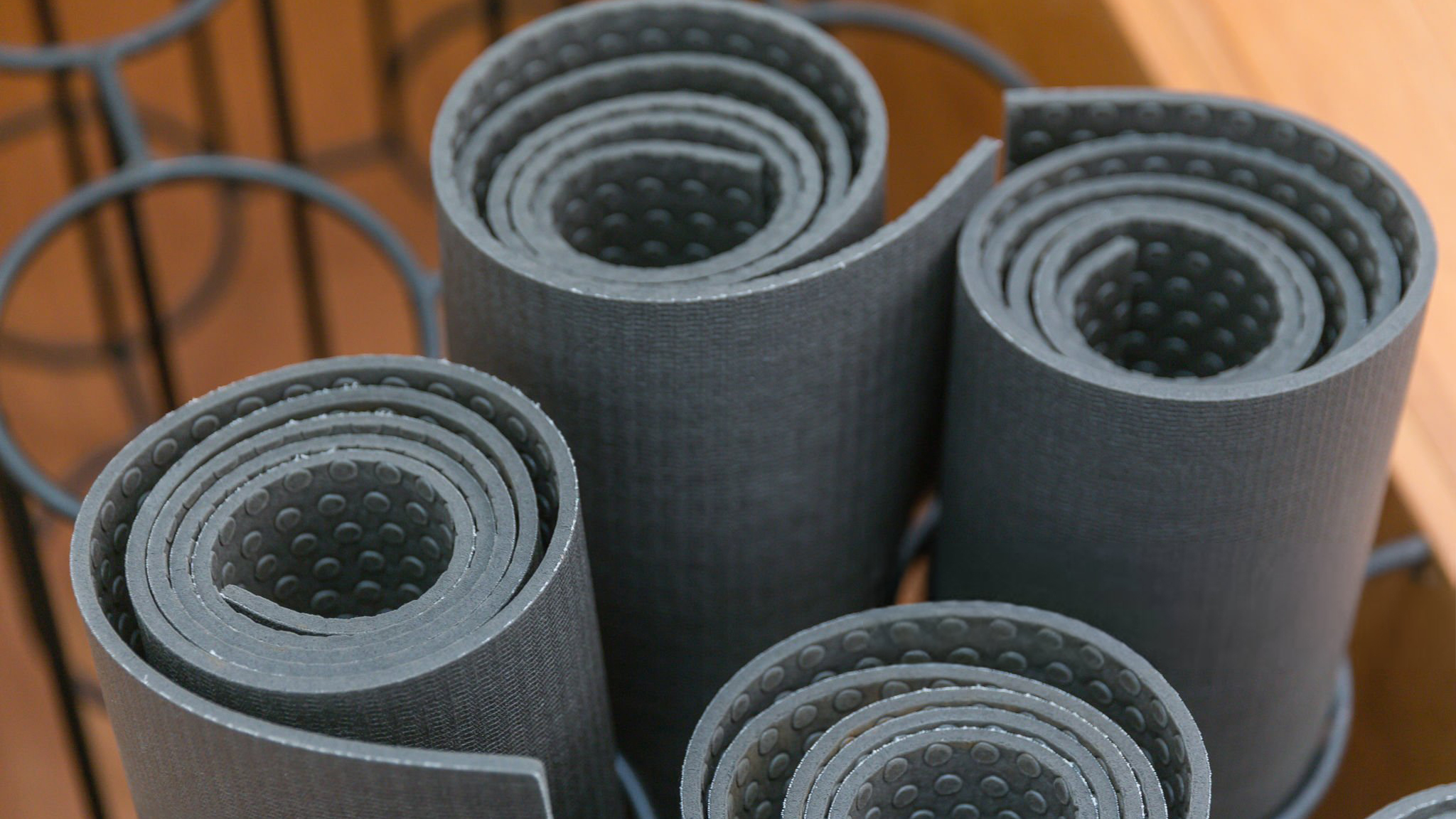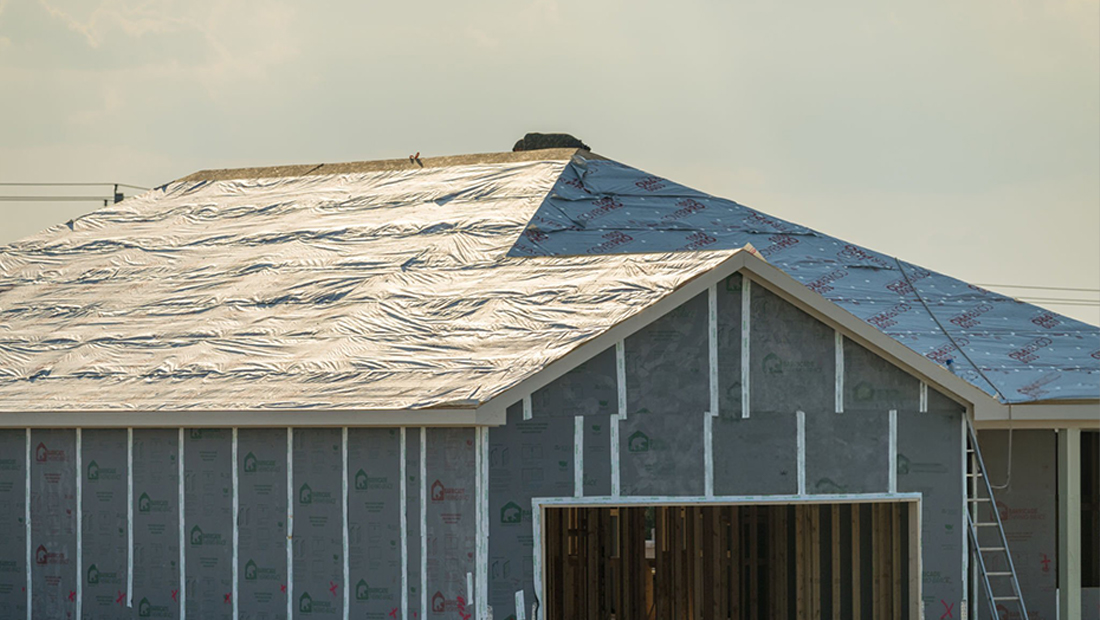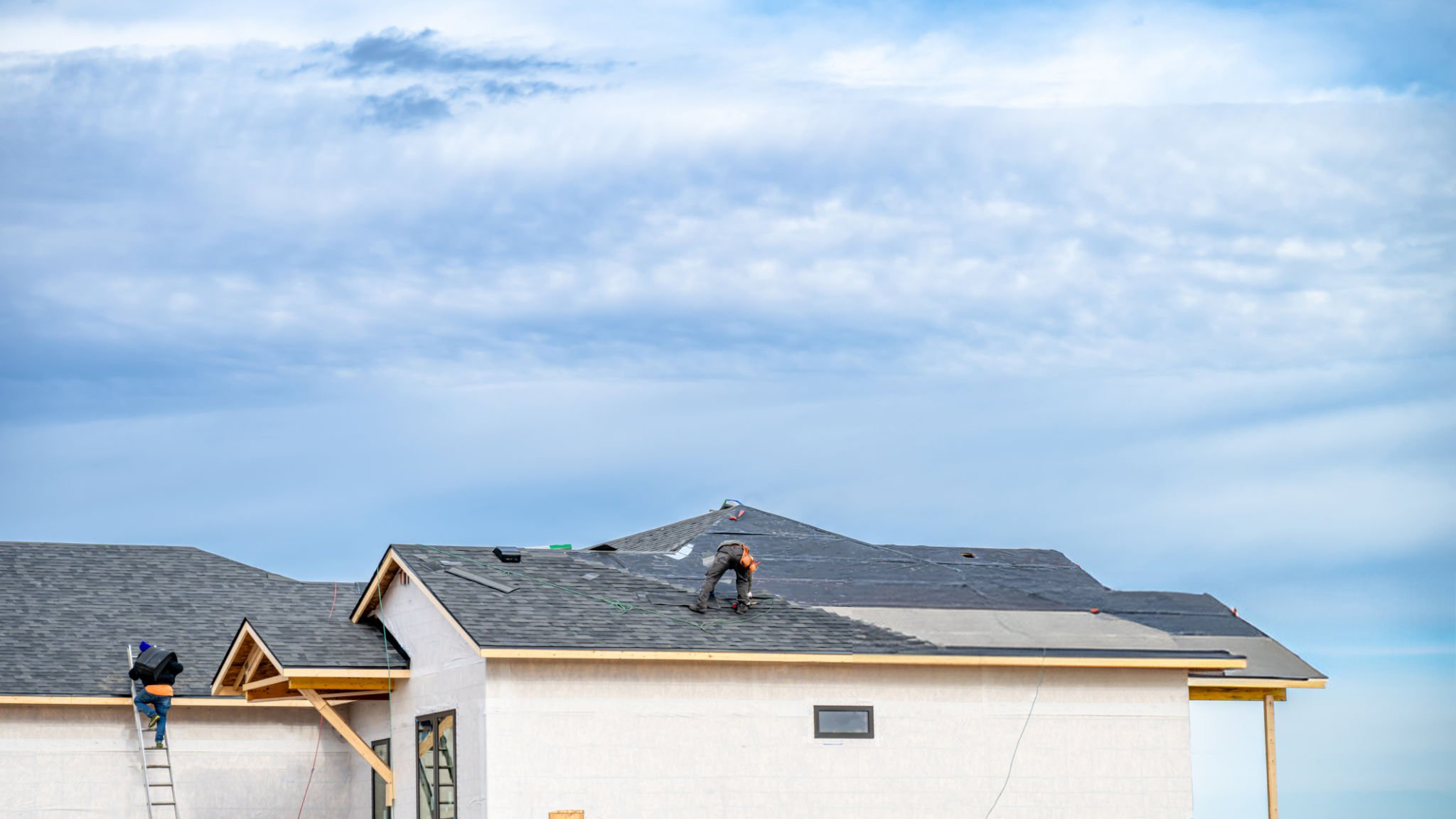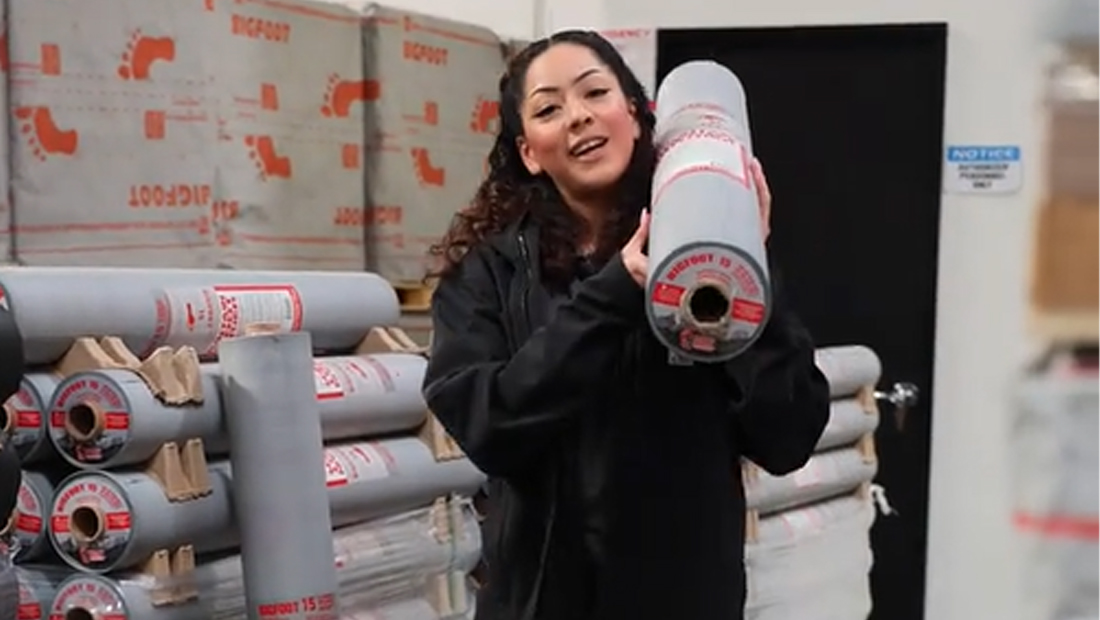Key Functions and Applications of Roofing Synthetic Underlayment
Roofing synthetic underlayment is a critical material used in building roof systems, typically made from synthetic materials such as
polyethylene, PVC, and others. As part of the roof structure, its primary function is to enhance the roof's overall performance, particularly
in terms of waterproofing and thermal insulation. With the advancement of building technologies and increasing demands for energy
efficiency, synthetic underlayment has become an essential component in modern architectural design.
Functions of Roofing Synthetic Underlayment
As an important layer in roofing systems, the key functions of synthetic underlayment are as follows:
Waterproof Protection: One of the core functions of roofing synthetic underlayment is waterproofing. It effectively prevents water
penetration, protecting the roof structure from rain and water accumulation. This function is particularly important in extreme weather
conditions, where the waterproof layer becomes crucial. The synthetic underlayment acts as an auxiliary material to enhance the roof's
waterproof performance.
Thermal Insulation: Synthetic underlayment often has good thermal insulation properties, helping the roof system maintain cooler
temperatures in the summer and retain warmth in the winter. By effectively blocking the transmission of external temperatures, the
underlayment reduces the load on air conditioning and heating systems, improving indoor comfort and saving energy.
Extending Roof Lifespan: By reducing the direct impact of external factors such as UV rays, wind, and rain, synthetic underlayment helps
extend the roof’s lifespan. It provides an additional protective layer, preventing premature wear and aging of roof materials.
Enhancing Structural Stability: The synthetic underlayment's role in the roofing system is not limited to waterproofing and insulation.
It also provides additional structural support for the roof, preventing deformation or damage caused by external forces.
Installation and Maintenance of Roofing Synthetic Underlayment
The installation of synthetic underlayment requires careful planning to align with the roof's structural design. Typically, the underlayment
is installed between the waterproof layer and roofing materials to ensure it provides both waterproofing and insulation functions. During
installation, workers must ensure that the underlayment material is tightly connected with other roof components to prevent leaks or heat
loss.
In terms of maintenance, synthetic underlayment should be regularly inspected, especially after heavy rainfall, snow, or prolonged exposure
to intense sunlight, to ensure it remains intact. Although synthetic underlayment is highly durable, any signs of damage or aging should be
addressed promptly to maintain the overall performance of the roof system.
Future Development of Roofing Synthetic Underlayment
As the construction industry increasingly focuses on energy efficiency and sustainability, the technology behind roofing synthetic
underlayment is continuously evolving. In the future, more innovative synthetic materials may be developed to provide even better
thermal insulation, waterproofing, and extended lifespans. Additionally, with the promotion of green building practices, synthetic
underlayment will likely be integrated with ecological roofing systems, rainwater harvesting systems, and other sustainable building
solutions to further enhance environmental performance.
In conclusion, roofing synthetic underlayment is not only an indispensable component of modern roofing systems but also an important
means of improving the overall performance of buildings and achieving energy-efficient and environmentally-friendly goals. As technology
advances and market demand increases, its applications will become even more widespread, making it a vital part of architectural design.
2025-03-25
DETAIL

Synthetic Roofing Underlayment – Exceptional Waterproofing Performance Upgraded
As the construction industry increasingly demands superior roofing waterproofing solutions, synthetic roofing
underlayment has become a standard choice for new builds and renovation projects. With its unique materials
and innovative technologies, synthetic roofing underlayment excels in waterproofing performance, providing a
reliable barrier against harsh weather conditions.
Non-Absorbent Material Properties:
Unlike traditional asphalt roofing underlayment, synthetic roofing underlayment is typically made from hydrophobic
polymers such as polypropylene (PP) or polyethylene (PE). These materials exhibit a very low affinity for water, maintaining
structural stability even under wet or rainy conditions. In contrast to traditional asphalt materials, synthetic underlayment
does not absorb water, soften, or delaminate in damp environments, ensuring the roofing structure remains strong and intact.
Seamless, Continuous Waterproof Layer:
To further enhance waterproofing performance, many high-quality synthetic roofing underlayments utilize multi-layer
co-extrusion or lamination techniques to tightly bond the waterproof membrane to the backing layer. This creates a
highly continuous and uniform waterproof barrier, similar to a solid "shield," which significantly reduces potential leakage
points. The innovative technology behind synthetic roofing underlayment undoubtedly offers buildings more stable and
reliable protection.
Proven Waterproofing Tests:
Top-quality synthetic roofing underlayment undergoes rigorous laboratory testing (such as ASTM D4869 or
ICC-ES requirements) to validate its waterproofing capabilities. These underlayments can withstand heavy
rainfall or snowmelt conditions without leakage, even after hours or days of water pressure testing, ensuring
that roofs stay dry and secure during extreme weather events.
As technology continues to evolve, synthetic roofing underlayment, with its exceptional waterproofing and
durability, is gradually becoming the industry standard, and it is expected to be a key solution for global roofing
waterproofing needs in the coming years.
2025-03-25
DETAIL

The New Darling of the Construction Industry, Driving the Green Building Revolution
As global attention on environmental protection and energy efficiency continues to rise, the construction industry is undergoing a
transformation centered around sustainability. In this revolution, synthetic roof underlayment materials, as an innovative building product,
are gradually emerging and becoming the core of new-generation roofing solutions.
The Rise of Synthetic Roof Underlayment
Synthetic roof underlayment, typically made from materials such as polyvinyl chloride (PVC), thermoplastic olefin (TPO), and ethylene
propylene diene monomer (EPDM), has become an ideal alternative to traditional roofing materials due to its excellent weather resistance,
waterproofing, and strong UV protection capabilities. Globally, the demand for synthetic roof underlayment is rapidly increasing, particularly
in regions where energy efficiency is a key focus.
Environmental Friendliness and Sustainability: Core Advantages of Synthetic Roof Underlayment
Synthetic roof underlayment not only offers exceptional performance in terms of functionality but also has environmental benefits, which
are a major driving force behind its rapid growth. First, synthetic materials tend to have a longer lifespan, reducing the frequency of
replacements and thus minimizing construction waste. Additionally, synthetic roof underlayment is often made from recyclable materials,
making it easier to recycle and reuse at the end of a building's life cycle. With the gradual implementation of global green building
standards, synthetic roof underlayment has become a key material for obtaining LEED (Leadership in Energy and Environmental Design)
certification and other environmental certifications.
Technological Innovation Driving Performance Enhancement
The technology behind synthetic roof underlayment continues to evolve to meet more stringent building standards and diverse
climate conditions. For example, TPO underlayment, with its excellent heat-reflective properties, helps reduce roof surface heat island
effects, lowering the cooling load of buildings and improving indoor temperature control. Additionally, PVC roofing underlayment offers
significant advantages in UV resistance and chemical corrosion protection, making it ideal for buildings in extreme climates.
Currently, more and more builders are adopting synthetic roof underlayment as an effective solution to improve building energy efficiency
and extend roof lifespan. Synthetic roof underlayment not only effectively seals out moisture but also enhances the thermal insulation of
roofs, contributing to more energy-efficient building designs.
Surging Market Demand and Bright Prospects for Synthetic Roof Underlayment
According to industry reports, the global synthetic roof underlayment market is expected to expand at a compound annual growth
rate (CAGR) of approximately 8% over the next five years. Particularly in regions such as the United States, Europe, and parts of Asia,
the demand for synthetic roof underlayment is growing as the construction industry increasingly seeks green materials. Whether in
commercial buildings, industrial facilities, or residential projects, the use of synthetic roof underlayment is becoming an indispensable
part of modern architectural design.
Many roofing contractors and construction companies have expressed that the use of synthetic roof underlayment has helped them
reduce roof maintenance costs while enhancing overall building performance. Moreover, as more environmental regulations are enacted,
buildings using synthetic roof underlayment are increasingly eligible for government green building subsidies and policy support.
Challenges and Future Outlook
Although the prospects for synthetic roof underlayment are highly promising, there are still some challenges. For instance, some
consumers and builders remain skeptical about the durability and environmental impact of synthetic materials, especially in markets
where traditional roofing materials still dominate. However, as technology continues to improve and material costs decrease, these
concerns are expected to be addressed, making synthetic roof underlayment more accessible and widely adopted.
Industry experts predict that with advancements in manufacturing processes and the push from environmental regulations, synthetic
roof underlayment will become a mainstream choice in the construction industry over the next few years. It will not only continue to
drive innovation in building materials but also contribute positively to global sustainability efforts.
Conclusion
The rise of synthetic roof underlayment marks a significant step toward a more environmentally friendly and energy-efficient
construction industry. With its exceptional performance and sustainability, synthetic roof underlayment will play an increasingly
important role in future construction projects. As technology continues to evolve and market demand grows, synthetic roof
underlayment is undoubtedly poised to become a vital component of modern buildings, driving the green building revolution
forward.
2025-03-24
DETAIL

Synthetic Roof Underlayment: Highlighting the Overall Economic Value and Lifecycle Cost Advantages
Recently, with the increasing attention paid by the construction industry to the performance and cost-effectiveness
of materials, synthetic roof underlayment has gradually become the focus of the market due to its unique overall
economic value and lifecycle cost advantages.
Although the initial investment in synthetic roof underlayment may be slightly higher than that of traditional asphalt
felt, it demonstrates extremely high cost-effectiveness during long-term use. Thanks to its excellent durability, it can
effectively reduce the risks of leakage and damage, greatly reducing the lifecycle cost of the roof. This means that long
-term repair costs and internal damage expenses caused by water penetration will be significantly reduced.
In terms of reducing repair and maintenance costs, synthetic roof underlayment performs remarkably well. It can
significantly reduce the occurrence of leakage, thereby avoiding damage to the interior decoration, insulation
layer, and structural components, achieving an almost "zero-maintenance" ideal state and saving a large amount
of repeated labor and material costs for property owners.
In addition, synthetic roof underlayment also plays an important role in enhancing property value and living comfort.
A roof system using this high-quality underlayment can significantly increase the value and attractiveness of the property.
For developers, this is a powerful means to enhance the competitiveness of their projects; for homeowners, synthetic
roof underlayment can not only provide solid protection for the building structure but also create a more comfortable
and reliable living environment for residents.
Industry experts said that with the continuous progress of technology and the improvement of market awareness,
synthetic roof underlayment is expected to occupy a larger share in the future construction market, bringing a dual
improvement in economy and performance to more construction projects.
2025-03-24
DETAIL

An Emerging Trend in the Construction Industry
With the continuous advancement of construction technology and the increasing demand for durability and environmental sustainability
in buildings, synthetic roof underlayment has become an essential material in modern construction. As an alternative to traditional asphalt
underlayment, synthetic underlayment is rapidly gaining popularity and playing an increasingly important role in roofing projects.
Origin and Development of Synthetic Roof Underlayment
Synthetic roof underlayment was initially developed to address the shortcomings of traditional paper-based underlayment in terms of
waterproofing and durability. Early roofing underlayment was primarily made from asphalt and paper, which provided some level of
waterproofing but fell short in terms of durability and resistance to environmental conditions. These materials were prone to moisture
damage, decay, and could even lead to roof leaks. As the construction industry demanded higher-performing materials, synthetic
alternatives became more prevalent. Today, synthetic roof underlayment is widely used in various construction projects, becoming a
critical component of modern roofing systems due to its superior performance and diverse options.
Applications of Synthetic Roof Underlayment
The applications of synthetic roof underlayment are vast, ranging from residential homes to commercial buildings. It is installed beneath
the roofing shingles, providing a protective layer that shields the roof structure from water damage and extends the lifespan of the roof.
In new buildings, synthetic underlayment provides an extra layer of protection, ensuring the roof can withstand harsh weather conditions.
In roof renovations, it helps enhance the waterproofing of the structure, reducing the risk of leaks.
In particular, synthetic underlayment is highly beneficial in regions with high humidity or frequent rainfall, where it acts as a reliable
protective layer to prevent water infiltration and roof decay. Additionally, in extreme weather conditions such as strong winds or heavy
rain, the tear-resistant properties of synthetic underlayment provide extra protection for the roof.
Technological Advancements and Innovation Driving Development
The continued evolution of synthetic underlayment is driven by innovations in material science and manufacturing processes. Modern
synthetic underlayments are made from a variety of high-performance materials, including polypropylene, polyethylene, and other
synthetic fibers. These materials offer excellent waterproofing, UV resistance, and high-temperature tolerance, while also providing
increased mechanical strength, ensuring the underlayment performs well under harsh weather conditions.
In addition to material innovations, the production processes for synthetic underlayment have also improved. More manufacturers are
employing advanced coating technologies, making the surface of the underlayment smoother and more even, which further enhances
its waterproofing capabilities. Moreover, modern synthetic underlayment has been optimized for weight and flexibility, making it easier
and more efficient for contractors to install.
Industry Outlook and Future Prospects
With the growing emphasis on green building and sustainability, synthetic roof underlayment, as an eco-friendly and durable building
material, is expected to see continued demand. The construction industry’s ongoing need for higher-performing materials will further
drive the development of synthetic underlayment technologies. In the future, synthetic underlayment may find applications in more areas,
becoming an indispensable part of construction materials.
Whether in the rooftops of high-rise buildings or residential homes, synthetic roof underlayment will provide more reliable protection
for buildings. In the future, it will not only serve as a protective layer but also become a key component in the creation of green,
sustainable, and long-lasting buildings, driving the construction industry toward a more sustainable future.
2025-03-22
DETAIL

Synthetic Roof Underlayment Demonstrates Excellent Compatibility, Helping to Enhance Roof Performance
Recently, the outstanding performance of synthetic roof underlayment in terms of compatibility with various
roofing materials has received much attention. Its multifunctional characteristics in roof covering applications
have brought new vitality to the construction industry.
Remarkable Compatibility Advantages
Synthetic roof underlayment shows impressive compatibility when dealing with various types of roof coverings.
Whether it is common asphalt shingles, metal sheets (steel, aluminum, copper), clay tiles, concrete tiles, wood
shingles, or composite panels, synthetic roof underlayment can perfectly match with them. Its specially treated
surface not only has no adverse effects on the adhesion of roofing materials but also does not interfere with the
thermal expansion process of the materials. On the contrary, it can enhance the durability and stability of roofing
materials, laying a solid foundation for the long-term reliable operation of the roof system.
Contributing to Extending Service Life
Synthetic roof underlayment plays a crucial role in extending the service life of roof coverings. By providing a dry
and stable base, it effectively protects the upper materials from water damage and deformation problems. For
example, when synthetic roof underlayment is laid under a metal roof, it can inhibit corrosion at the bottom and
extend the service life of the metal roof. When used under asphalt shingles, it can significantly reduce the risk of
asphalt compound leakage caused by overheating, ensuring the stable performance of asphalt shingles. This
characteristic makes synthetic roof underlayment an ideal choice for enhancing the overall performance of the roof
and reducing maintenance costs.
With the continuous improvement of the construction industry's requirements for roof quality and durability,
synthetic roof underlayment, with its excellent compatibility and protective effect on roof coverings, is expected
to be more widely applied in future construction projects.
2025-03-22
DETAIL

Synthetic Roof Underlayment: A New Choice for Enhancing Roof Performance
As the construction industry continues to seek materials that enhance roof performance, synthetic roof underlayment has become an
increasingly popular solution. This innovative material is widely used in roofing systems to provide improved waterproofing, insulation,
and durability, while also extending the lifespan of the roof. This article delves into the functions and applications of synthetic roof
underlayment and its significant impact on building structures.
Functions of Synthetic Roof Underlayment
Synthetic roof underlayment is a layer of synthetic material installed beneath roofing tiles, primarily designed to enhance the protection
of roofing systems. It is typically made from polymers, fibers, or other synthetic materials, designed to perform well in various climate and
environmental conditions. Unlike traditional asphalt-based underlayment, synthetic underlayment utilizes modern technological materials,
offering a more comprehensive performance to enhance the overall roof structure.
Waterproofing Function
One of the key functions of synthetic roof underlayment is to provide an effective waterproof barrier. In environments with heavy rain,
snow, or high humidity, the underlayment prevents water from penetrating into the roof, thus protecting the roof structure from damage
or corrosion. Particularly when the roof tiles or other outer layers are damaged, synthetic underlayment continues to offer protection,
ensuring the building’s safety.
Insulation Function
Synthetic underlayment also offers excellent insulation properties. In the summer, it helps reduce the heat transfer from direct sunlight,
keeping the interior cool. In the winter, it prevents heat from escaping, improving the overall comfort of the indoor environment. This
function is crucial in improving the energy efficiency of a building, especially in areas with fluctuating climates, where synthetic
underlayment becomes a key material for regulating roof temperatures.
UV Resistance and Durability
The durability of synthetic underlayment is another notable feature. It can withstand prolonged exposure to ultraviolet (UV) radiation
without deteriorating. Its special UV-resistant design ensures that the underlayment remains stable even after long-term exposure to
outdoor conditions, thereby extending the overall lifespan of the roofing system.
Installation and Maintenance of Synthetic Roof Underlayment
When installing synthetic roof underlayment, it is typically laid over the base of the roof, covering the entire surface. Synthetic
underlayment is compatible with various roofing materials, such as tiles or metal panels, and the installation process is relatively simple
and efficient. Its lightweight nature makes the construction process faster, reducing labor and time costs.
In terms of maintenance, synthetic underlayment requires minimal upkeep due to its durability and UV resistance. Regular inspections
to check for external damage and ensuring the underlayment remains intact are generally sufficient. In most cases, it does not need to
be replaced or repaired frequently.
Conclusion
Synthetic roof underlayment is not just a simple waterproofing material; it provides highly effective functional support for modern
buildings, especially in terms of waterproofing, insulation, and durability. As the construction industry demands higher performance
materials, synthetic underlayment has become an essential component of roofing systems. Its application not only improves the safety
and comfort of buildings but also contributes to enhanced sustainability and energy efficiency in modern architecture.
2025-03-21
DETAIL

Synthetic Roofing Materials: Significant Environmental and Health Benefits
Recently, with the increasing attention paid to environmental protection and health in the construction industry,
a new type of synthetic roofing material has received widespread attention due to its excellent environmental and
health benefits.
Reducing VOC Emissions to Protect the Environment and Health
This synthetic material does not use a large amount of asphalt components during the production process. This characteristic
ensures that it will not release a strong petroleum odor or a large amount of volatile organic compounds (VOCs) during use.
This advantage not only creates a healthier working environment for installers during the construction process but also protects
occupants from the harm of VOCs, greatly reducing the negative impact on the environment.
Recyclability to Boost Green Building Development
In addition, this synthetic roof underlayment material is recyclable at the end of its service life. Relevant data shows that
its recycling can effectively reduce the generation of construction waste and resource consumption. This characteristic is
highly consistent with the current concept of green buildings. For construction projects that pursue LEED certification and
the goal of sustainable development, it is undoubtedly an ideal choice. Experts in the construction industry said that the
wide application of such materials is expected to promote the entire construction industry to develop in a more environmentally
friendly and healthy direction.
2025-03-21
DETAIL

Application and Development of Roof Synthetic Underlayment
Roof synthetic underlayment, a new type of building material, has gained increasing popularity in the construction industry in recent
years. Its role in roofing systems goes beyond waterproofing; it also enhances the durability, weather resistance, and energy efficiency
of roofs. As the construction industry places more emphasis on green buildings and environmentally friendly materials, roof synthetic
underlayment has gradually become an essential component in modern architecture.
History and Development of Roof Synthetic Underlayment
The origin of roof synthetic underlayment can be traced back to the 1960s. The earliest synthetic roofing underlayment materials were
primarily made from rubber or polyvinyl chloride (PVC), designed to increase roof waterproofing and durability. With continuous
advancements in building material technology, especially the application of synthetic polymers, the types and performance of roof
synthetic underlayment materials have significantly improved.
In the 1990s, roof synthetic underlayment materials began to gain wider adoption in Europe and the United States, particularly in
commercial buildings and industrial facilities. Today, as environmental awareness has grown, roof synthetic underlayment has expanded
into residential buildings and is widely used in green building projects, becoming an important element in modern architectural design.
Practical Applications of Roof Synthetic Underlayment
Residential Buildings
In residential buildings, roof synthetic underlayment is primarily used for waterproofing and insulation. Particularly in areas with
heavy rainfall and humidity, synthetic underlayment effectively prevents water infiltration and roof leaks. Additionally, it helps
provide insulation during the summer, reducing air conditioning energy consumption and improving indoor comfort. Roof
synthetic underlayment is also often integrated with green roofing systems to support and protect plants.
Commercial Buildings and Industrial Facilities
For commercial buildings and industrial facilities, the durability and weather resistance of roof synthetic underlayment are especially
important. These buildings are often exposed to harsh environmental conditions such as strong ultraviolet radiation, high temperatures,
strong winds, and chemical corrosion. Roof synthetic underlayment effectively protects the roof structure from damage caused by
environmental factors. In chemical plants and high-humidity areas, the corrosion resistance and chemical resistance of synthetic
underlayment are particularly beneficial.
Green Roofing Systems
With the rapid pace of urbanization, green roofs have become an important part of urban sustainable development. Roof synthetic
underlayment plays a crucial role in green roofing systems. It provides a solid waterproofing, drainage, and separation layer for the
green roof, ensuring healthy plant growth while protecting the roof structure from water damage. By using synthetic underlayment,
green roofing systems can effectively reduce urban heat island effects and improve the energy efficiency of buildings.
Solar Photovoltaic Systems
Solar photovoltaic systems have become widely used in modern buildings, and roof synthetic underlayment provides a stable support
foundation for solar panels. Synthetic underlayment helps prevent water infiltration into the roof structure, extending both the roof's
and solar panel's lifespan. Due to its ultraviolet resistance and weathering characteristics, roof synthetic underlayment also enhances the
overall performance of solar panels, ensuring they remain effective even under long-term exposure to the elements.
Installation and Maintenance of Roof Synthetic Underlayment
Roof synthetic underlayment installation is typically carried out by professional contractors. The process is relatively simple and does not
require major alterations to the existing roof structure. Depending on the roof’s shape and requirements, the underlayment material can be
adjusted to ensure full coverage of the roof surface. During installation, the underlayment is typically combined with other roofing
components, such as insulation layers, drainage systems, and ventilation systems, to create an efficient roofing protection system.
Compared to traditional roofing materials, roof synthetic underlayment has lower maintenance costs. Its durability and resistance to aging
are strong, and typically only periodic checks for damage, water accumulation, or debris buildup are necessary. To extend the roof's service
life, regular cleaning and inspection are essential, especially in areas with extreme weather or heavy rainfall.
2025-03-20
DETAIL

Synthetic Roof Underlayment: Highlighting Overall Economic Value and Life Cycle Cost Advantages
Recently, with the continuous development of building material technology, synthetic roof underlayment has gradually
emerged in the construction industry. It has demonstrated remarkable advantages in terms of overall economic value
and life cycle costs, attracting widespread attention.
Although the initial cost of synthetic roof underlayment may be slightly higher than that of traditional asphalt felt, it has
outstanding cost-effectiveness in long-term use. Due to its excellent durability, it can effectively reduce the risks of leakage
and damage, significantly reducing the life cycle cost of the roof. In the long run, this not only reduces repair costs but
also avoids the expenses for internal damages caused by water seepage, saving a large amount of money for building
owners.
Meanwhile, synthetic roof underlayment performs exceptionally well in reducing repair and maintenance costs. It
can effectively prevent leakage, thus avoiding damages to the interior decoration, insulation layers, and structural
components, achieving an ideal condition of nearly "zero maintenance" and saving owners the repeated investment
in labor and materials.
From the perspective of property value enhancement, a roof system with high-quality synthetic roof underlayment
can significantly increase the value and attractiveness of the property. For developers, this undoubtedly adds selling
points to the real estate projects. For homeowners, it not only provides better protection for the building structure
but also creates a more comfortable and reliable living environment for residents.
Industry experts stated that with the continuous increase in the market's requirements for the performance of
building materials, synthetic roof underlayment is expected to occupy a larger share in the future construction
market and contribute to the sustainable development of the construction industry.
2025-03-20
DETAIL

A New Material Driving Innovation in Construction
Roof synthetic underlayment, a new type of material in modern building roofing systems, has gradually gained application in recent years.
Made from high-performance synthetic materials, it is commonly used to improve the waterproofing and durability of roofs. Despite its
potential in the market, the promotion of roof synthetic underlayment still faces some challenges.
Growing Market Demand
As the demand for green buildings rises, the market demand for roof synthetic underlayment is steadily increasing. More and more
builders are beginning to recognize its advantages in improving building energy efficiency and extending the lifespan of roofs. However,
many smaller construction companies still prefer traditional roofing materials, making it harder for synthetic underlayment to become
widely adopted.
Technical Development Bottlenecks
Roof synthetic underlayment still faces some technical bottlenecks. There is significant variation in product quality among different brands
in the market, and a lack of unified industry standards creates confusion for consumers and hinders the healthy development of the industry.
Additionally, production processes and material technologies need continuous improvement to enhance product quality and reduce
production costs.
Construction and Maintenance Challenges
Although the installation of roof synthetic underlayment is relatively simple, it still requires professional installation teams. Some
construction workers lack the necessary experience, which could affect the installation results. Moreover, synthetic underlayment requires
regular inspection and maintenance to maintain its long-term performance, and builders and property owners must pay attention to this.
Conclusion
As an emerging material, roof synthetic underlayment has significant potential to improve roofing performance. Although the market and
technical development still face challenges, with the improvement of industry standards and technological advancements, roof synthetic
underlayment is expected to see broader application in the future.
2025-03-19
DETAIL

Synthetic Roof Underlayment: The Lightweight Option Revolutionizing Roof Installation
In the construction industry, synthetic roof underlayment is quietly changing the traditional landscape of roof
construction with its lightweight and efficient installation features.
I. Remarkable Weight and Handling Advantages
Synthetic roof underlayment shows a huge advantage in terms of weight. Depending on the product grade, its
weight generally ranges from 90 to 200 grams per square meter. In sharp contrast, traditional 30 - pound asphalt
felt, when converted, weighs approximately 1.0 - 1.2 kilograms per square meter. Such a significant weight difference
not only greatly reduces transportation costs but also significantly eases the handling difficulty. For construction
workers, the reduction in handling weight effectively reduces fatigue and the risk of injury, providing a strong
guarantee for construction safety.
II. Convenient Cutting and Arrangement Features
The installation process of synthetic roof underlayment is extremely convenient. The membrane material has good
workability. Workers can easily complete the cutting work with just an ordinary utility knife or scissors, without the
need for special tools. This feature enables installation workers to quickly adjust the underlayment according to the
unique shape and size of the roof. Whether it is the complex ridge part or the special skylight area, it can be quickly
adapted, greatly accelerating the installation process and effectively improving construction efficiency.
III. Precision Printing Alignment Guides
Some brands of synthetic roof underlayment are carefully printed with alignment lines or grids on the surface. These
printed markings become a powerful assistant for installation workers to operate accurately. Through these guides,
installation workers can layout more accurately, ensuring that the overlap between the underlayments meets the
standards. This not only improves the installation speed but also significantly enhances the overall aesthetics of the
roof after laying.
Synthetic roof underlayment, with its advantages in weight, cutting and arrangement, and precision installation, is
bringing a new and efficient experience to construction, promoting the industry to develop in a safer and more efficient
direction.
2025-03-19
DETAIL



 BIGFOOT 15
Learn More
BIGFOOT 15
Learn More




 BIGFOOT 30
Learn More
BIGFOOT 30
Learn More




 BIGFOOT 180
Learn More
BIGFOOT 180
Learn More




 BIGFOOT HD
Learn More
BIGFOOT HD
Learn More





 BIGFOOT 15
BIGFOOT 15




 BIGFOOT 30
BIGFOOT 30




 BIGFOOT 180
BIGFOOT 180




 BIGFOOT HD
BIGFOOT HD










 Back
Back



